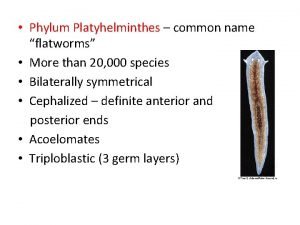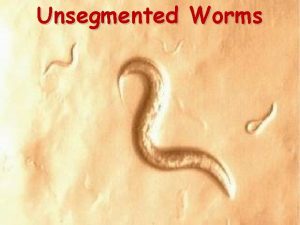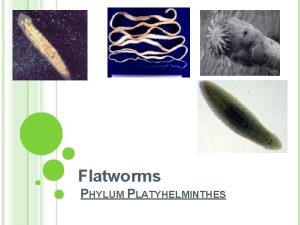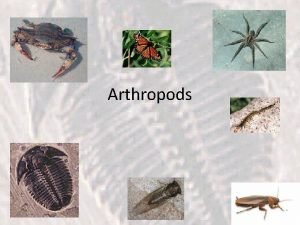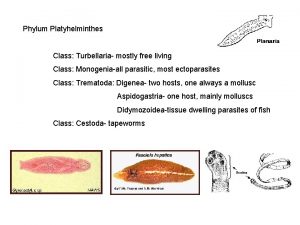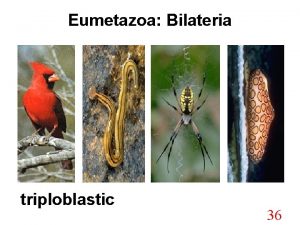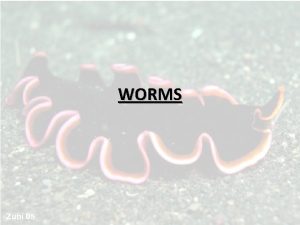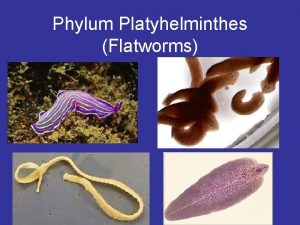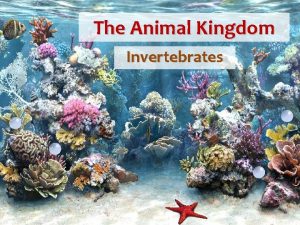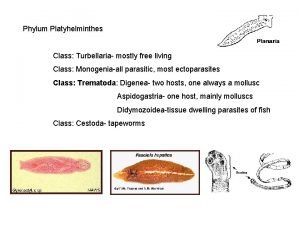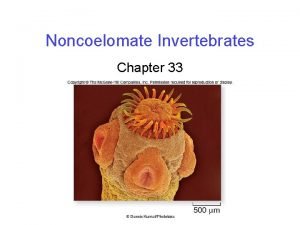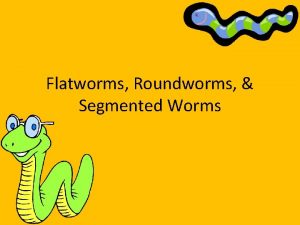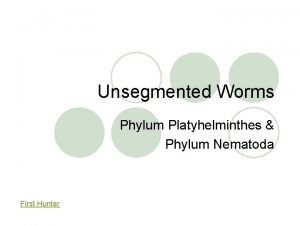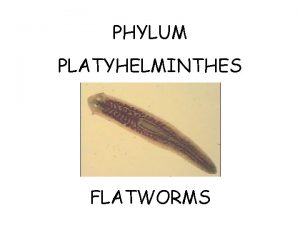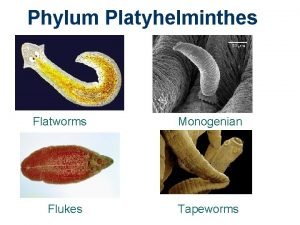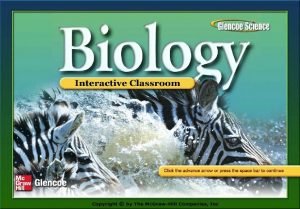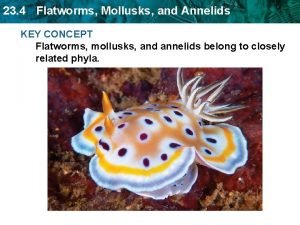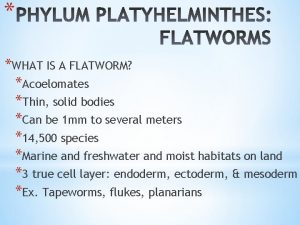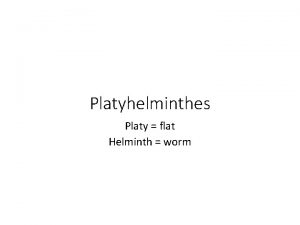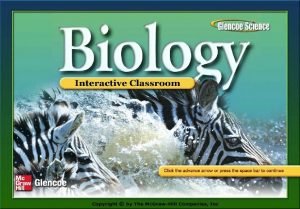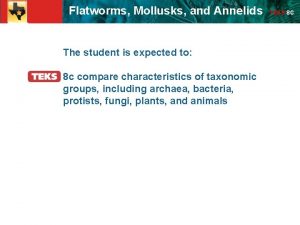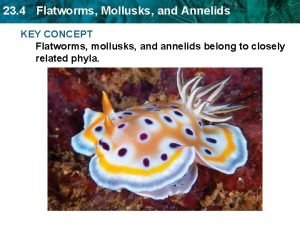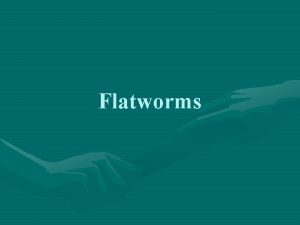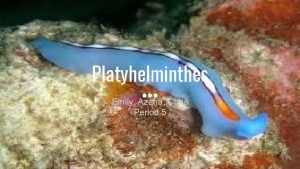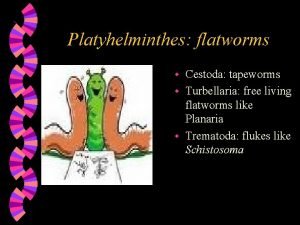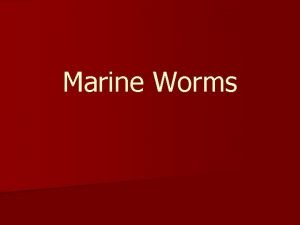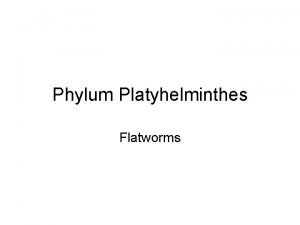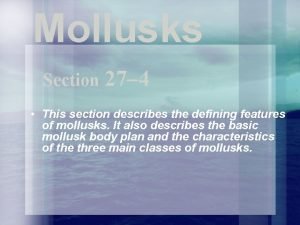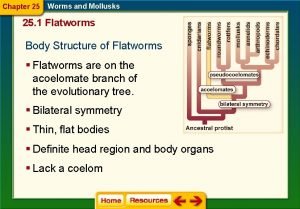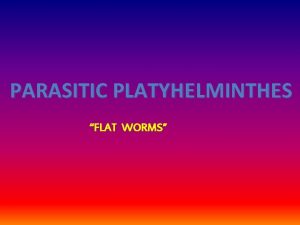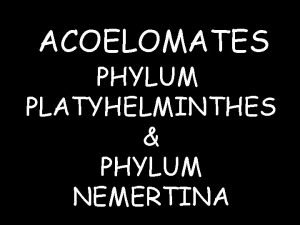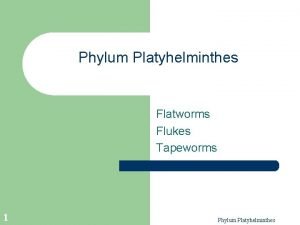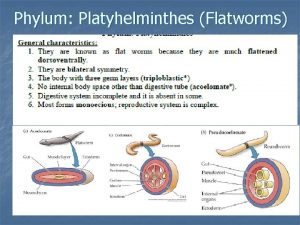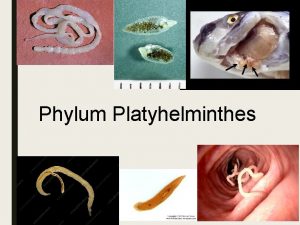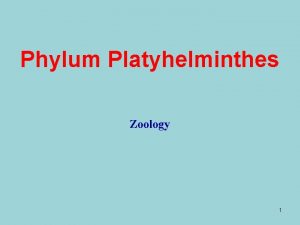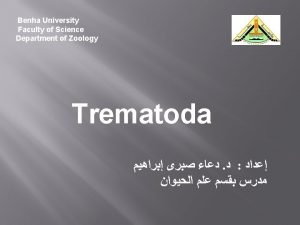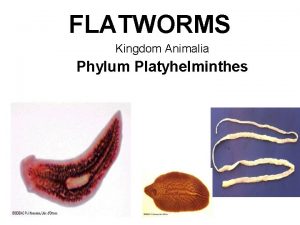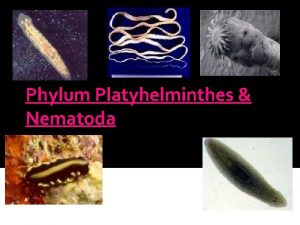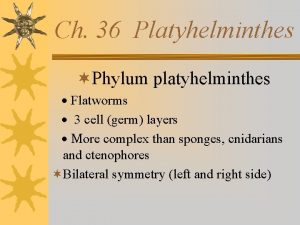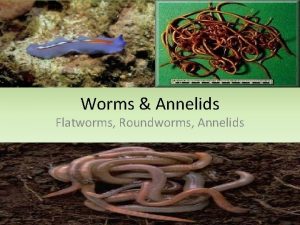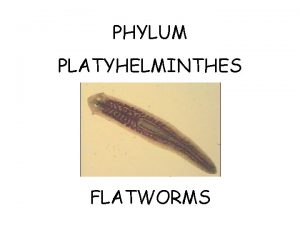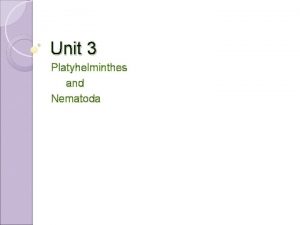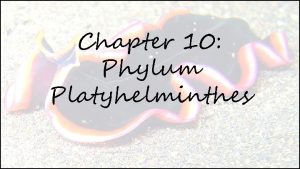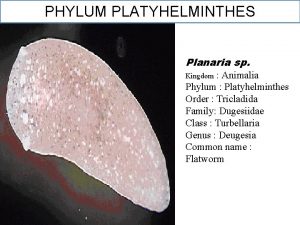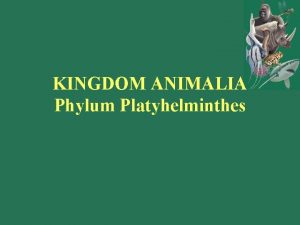Phylum Platyhelminthes Flatworms Phylum Platyhelminthes Common name flat




































- Slides: 36

Phylum Platyhelminthes Flatworms

Phylum Platyhelminthes § Common name: flat worms § General Characteristics: § Unsegmented body § Bilaterally symmetrical § Flattened dorsoventrally § Some free-living and others parasitic § Marine or fresh water or live in moist places on land

Physiology § Acoelomate: Without a body cavity – Not well defined – Fluid filled

Response system § Cephalization: Concentration of sense organs and nerve cells at the front of the animal’s body – The “head” § The head encloses several ganglia: groups of nerve cells that control the nervous system. NOT complex enough to be called a brain.

Response system § Look like they have eyes near the anterior end of the body. § Each “eye” is actually an eyespot: detects changes in the amount of light in the environment.

Feeding § Free-living (non-parasitic) § Carnivorous, prey on small invertebrates by entangling them with body & mucus § Have a muscular tube called the pharynx § Extend the pharynx out of the mouth § Pharynx then pumps food into the cavity. § Food is digested by cells of the gut.

§ Notice eyespots, ganglia, & pharynx

Feeding § Parasitic flatworms § Obtain nutrients from foods that have already been digested by the host. § Feed on blood, tissue fluids, or pieces of cells within the host’s body

Platyhelmenthes: Movement § Move by contracting muscles § Glides over rocks or undulates through water

Excretion § Some have flame cells: specialized cells that filter and remove excess water from the body.

Reproduction § Capable of regeneration § regeneration refers to the process by which plants and animals replace lost or damaged parts by growing them anew

Reproduction § Sexual reproduction: - Hermaphroditic: Containing both sex organs § Asexual reproduction: - Fission: Asexual reproduction by a division of the body into 2 parts.

Hermaphrodites

Classes § We will cover 3 classes of platyhelminthes: Class Turbellaria Class Trematoda Class Cestoda

Class Turbellaria § Include marine flatworms & planarians § Non-parasitic § Mostly free-living worms § Found on the bottom of rocks or on leaf litter

Class Turbellaria § How they eat: - Mouth is located near the middle of the ventral surface - Mouth is inserted into the prey - Food is partially digested externally before it is sucked into the gut.

Class Turbellaria § They crawl about over a trail of mucus that is secreted by specialized epidermal cells

Class Turbellaria: Polyclads aka Marine Flatworms

Class Trematoda § Parasitic flukes § Have 1 or 2 suckers that help attach it to the host. § Many flukes can infect humans, and cause diseases.

Class Trematoda § Have complex life cycles that involve one or more hosts before reaching the adult stage. Sheep Liver Fluke Eggs

Hosts § Need multiple hosts for life cycle. § Primary Host: The organism in which it reproduces sexually. § Intermediate host: The organism in which embryos develop into larvae.

Class Trematoda Fluke Life Cycles

Disease by flukes § Schistosomiasis: caused when the fluke’s eggs clog blood vessels, causing swelling and tissue decay in lungs, liver, spleen, or intestine.


Class Cestoda § Include tapeworms § Are long, flat, parasitic worms adapted to life inside the intestines of the host.

Class Cestoda: Physiology § Scolex: The head of the adult tapeworm * Contains suckers or hooks * Used to attach worm to intestinal wall * Absorbs nutrients from host’s intestines

Class Cestoda: Physiology § Proglottids: are the segments that make up most of the worm’s body. § Mature proglottids contain both male & female reproductive organs.

Class Cestoda: Physiology § Mature proglottids break off to be passed out of the host in feces. They actually wiggle much like an adult worm does. On the left is sesame seeds. On the right is proglottids.

Class Cestoda in our Pets § Cat & dog tapeworm proglottids/eggs are eaten by a flea who are the intermediate host. § Your cat or dog licks themselves and swallows the flea that contains the tapeworm larvae where it matures into an adult tapeworm. § The cycle keeps repeating.

Class Cestoda in our Pets § Veterinarians have both injections and pills to rid your pet of tapeworms. § To prevent tapeworms: Get rid of fleas!

Class Cestoda in Humans § Food or water contaminated with tapeworm eggs is eaten by cows, fish, or other intermediate hosts. § They hatch and burrow into the muscle tissues of the host & remain in a dormant stage called a cyst. § Humans then eat uncooked intermediate host, and tapeworm grows into an adult.

§ Tapeworm cycle in humans

Tapeworm Cysticercosis

Platyhelmenthes in Humans § They may be transmitted from host to host through consumption of contaminated food and water, or by putting anything into your mouth that has touched the stool (feces) of an infected person or animal. § 40 to 50 million people are infected with one or more of the parasites.

Eating Raw Foods § Parasites (in the larval stage) consumed in uncooked, or undercooked, unfrozen seafood can present a human health hazard.

Food Preparation § Red meats and poultry should reach an internal temperature of 160 and 180 degrees, respectively to kill parasites. § Freezing (-4°F (-20°C) or below (internal or external) for 7 days or -31°F (-35°C) or below (internal) for 15 hrs) of fish intended for raw consumption also kills parasites.
 Platyhelminthes common names
Platyhelminthes common names Characteristics of platyhelminthes
Characteristics of platyhelminthes What are platyhelminthes characteristics
What are platyhelminthes characteristics Common name of arthropoda
Common name of arthropoda Cestodes
Cestodes Flatworm example
Flatworm example Phylum platyhelminthes characteristics
Phylum platyhelminthes characteristics Platyhelminthes bilateral symmetry
Platyhelminthes bilateral symmetry Platyhelminthes asexual reproduction
Platyhelminthes asexual reproduction Phylum platyhelminthes characteristics
Phylum platyhelminthes characteristics Plat ee
Plat ee Parasite class
Parasite class Classification of platyhelminthes
Classification of platyhelminthes Are platyhelminthes segmented
Are platyhelminthes segmented Bindhusaran
Bindhusaran Name all rays
Name all rays Small flat unsegmented worms
Small flat unsegmented worms Taenia belongs to which phylum
Taenia belongs to which phylum Monogenea
Monogenea Section 27-3 annelids
Section 27-3 annelids Chapter 25 section 1 flatworms
Chapter 25 section 1 flatworms Section 4 flatworms mollusks and annelids
Section 4 flatworms mollusks and annelids Are flatworms acoelomates
Are flatworms acoelomates Flat taxonomy
Flat taxonomy Vampire squid
Vampire squid Section 4 flatworms mollusks and annelids
Section 4 flatworms mollusks and annelids Section 4 flatworms mollusks and annelids
Section 4 flatworms mollusks and annelids Flatworms symmetry
Flatworms symmetry Flatworms description
Flatworms description Free living flatworms
Free living flatworms Marine flatworm symmetry
Marine flatworm symmetry Parasite
Parasite This section describes
This section describes Chapter 25 section 1 flatworms
Chapter 25 section 1 flatworms Hcf of 48 and 60
Hcf of 48 and 60 Common anode and common cathode
Common anode and common cathode Lowest common multiple factor tree
Lowest common multiple factor tree
